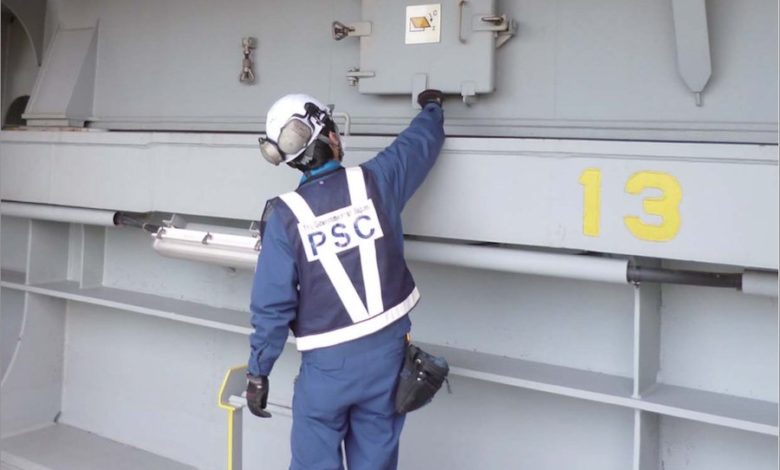One eye to the telescope? We need more visibility, not less, on vessel inspection data

The decision by the Paris MoU to limit the availability of its inspection results undermines the building of a safety culture based on data sharing, says Paul Stanley, the CEO of Global Navigation Solutions.
Hardly a day goes by without the shipping industry being encouraged to embrace greater data sharing in order to achieve ‘a digitalised business’ mindset or being admonished for not doing so quickly enough.
Despite the challenges of the transformation required, there is plenty of evidence that those shipping companies that want to enhance their operations and understand areas for improvement can do so with better data.
We also have good examples of where data sharing promotes safety, the most obvious of which is how the effectiveness of Port State Control has improved since authorities started sharing data and making it publicly available.
Last year’s Global Maritime Forum meeting in Hong Kong identified data sharing as having the potential to overcome fragmentation in maritime safety and, inspired by practices from the aviation industry, how shipping could establish a platform that enables international bodies to collect, analyse and publish safety-related information.
This makes the decision of the Paris MoU to withdraw publication of bulk data except to the IMO and Equasis, so surprising. In fact, the organisation might already be rowing back on the decision it made at the end of 2019 and could allow limited access to its data on PSC inspections following a committee meeting in May.
From the results GNS has analysed, sourced from the combined MoU organisations, there is a clear need to maintain a global data stream and make it as widely available as possible if we are to achieve further improvements in safety.
The headline figures are broadly positive: the number of PSC inspections annually is increasing, up 4% over the last four years, while the number of deficiencies has fallen by 8% over the same period.
As might be expected, lifesaving appliances and fire safety measures were the biggest causes of deficiencies in 2018. Some 39% fewer navigation related deficiencies were recorded last year compared to 2014, suggesting that the move to digital navigation has made it easier for vessels to comply.
Issues with Nautical Publications were the third most likely cause of a deficiency in 2018, accounting for 39% of navigation-related deficiencies, perhaps because they are easiest to identify. However, whereas paper chart-related deficiencies fell by 66% over that period, issues related to ECDIS and Electronic Navigation Charts increased by a factor of nearly four as more of the fleet transitioned to digital navigation.
Managing ENC data should be relatively straightforward – though our research has shown that many operators tend to buy too many ENCs and not always the data they actually need.
It is clear from digging a little deeper that the industry still has an issue with navigational safety. If we combine all the defects reported in the Safety of Navigation categories, they dwarf the top two categories, despite being much easier to rectify.
It seems obvious that ships will benefit from a single view of their environment in terms of availability of critical voyage and safety data. But according to our research the missed opportunity goes beyond failure to capitalise on just-in-time delivery of navigation data for operational reasons. Vessel inventories are often not being regularly reviewed against routes, Flag, Port State or technical library requirements and the software installed onboard to help navigate safely isn’t being fully exploited.
The core of what we do is about safety and compliance; enabling our customers to benchmark their performance and providing tools that make it easier to identify and rectify problems. Instead of having to sift vast tracts of data, we provide information as a management tool that can be acted on, for every vessel world-wide, whether or not they are a GNS customer.
The first quarter of 2019 has tragically demonstrated how much work is still needed to improve safety of navigation. But surely the answer is not to remove the data which certification bodies, risk managers and service providers can use to show operators where their biggest risk lie.
Without the full picture and the ability to establish connectivity between them, it is much harder for owners to know what action to take. Withdrawing a critical data stream undermines the safety management process and increases risk, at a time when more visibility is needed.

Totally agree with Paul – how can we get the Paris MoU to reverse this strange decision?
Their action was contrary to the mission of the Paris MOU and this action will have a detrimental effect on maritime safety. Providing PSC data to industry has multiplied the effect of these inspections, and this has been instrumental in driving out sub-standard shipping.
Lets hope for a change of heart ( or brain )